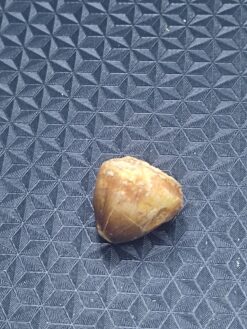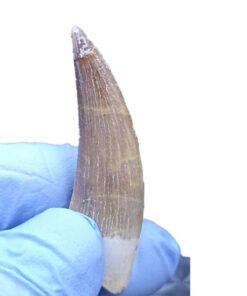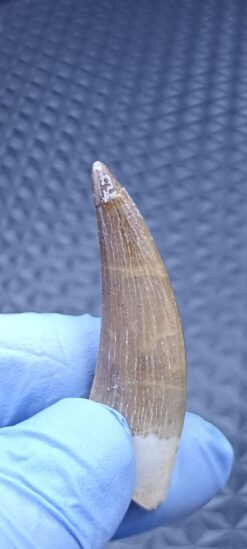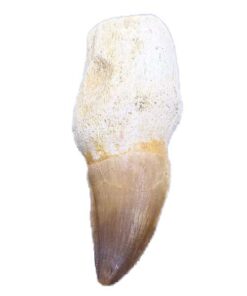1.2 ” Tooth Globidens Mosasaur fossil in Matrix teeth Dinosaur Khouribga Morocco
$ 19,00
SPECIESI gdamanosaurus aegyptiacus
AGE Late Cretaceous – Maastrichtian
LOCATION wlad Abdoun Basin khouribga Morocco
FORMATION Phosphate ocp
SIZE 1.2 inch
Name: Globidens (Globe teeth).
Phonetic: Glo-bih-denz.
Named By: Gilmore - 1912.
Classification: Chordata, Reptilia, Squamata, Scleroglossa, Mosasauridae, Mosasaurinae, Globidensini.
Species: G. alabamaensis (type), G. dakotensis, G. phosphaticus, G. schurmanni, G. simplex.
Diet: Carnivore.
Size: 6 meters long.
Known locations: USA. Africa.
Time period: Campanian to Maastrichtian of the Cretaceous.
Fossil representation: Many specimens.
Although Globidens was not the only mosasaur to adapt to a diet of almost exclusively hard shelled animals, it does display perhaps the most specialised teeth. Rather than the sharp conical teeth seen in other mosasaurs such as Tylosaurus and Taniwhasaurus, Globidens had rounded teeth that had a ‘globe shaped’ upper portion of the crown that sat upon a slightly narrower base. An important aspect of the teeth being semispherical rather than conical is that they were much more resilient to impact damage such as chips and cracks. This meant that every time the jaw was moved up and down, each tooth would strike the shell of the prey animal like a ball hammer, cracking up the shell so that Globidens could get at the soft flesh within.
4 reviews for 1.2 ” Tooth Globidens Mosasaur fossil in Matrix teeth Dinosaur Khouribga Morocco
Only logged in customers who have purchased this product may leave a review.



























Louie (verified owner) –
All as described, thank you
James (verified owner) –
Beautiful specimen! Exceeded expectations! Thank you! My son is very excited to show it off
Maria (verified owner) –
postal service sucks pretty much every where item finally arrive and are excellent quality
Bella (verified owner) –
absolutely fantastic specimens. Well wrapped for delivery and definitely value for money. highly recommend